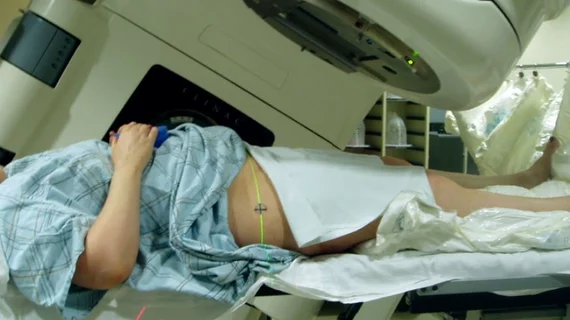Experts are calling for optimized patient shielding efforts after a study showed early and repeated diagnostic imaging may increase an individual's risk of developing testicular cancer.
Medical imaging exams—such as CT and x-ray—expose patients to small amounts of radiation, a well-known risk factor for cancer. But few recent studies have investigated the impact of such radiation, Penn Medicine researchers explained Nov. 9 in PLOS One.
After studying more than 1,200 men with and without the disease, the team found people with three or more exposures in the lower abdomen and pelvic regions faced a 59% increased risk of having testicular germ cell tumors. TGCT is the most common cancer in the U.S. and Europe in men between 15 and 45 years old.
What’s more, individuals who were exposed to diagnostic radiation before they turned 10 were also at higher risk.
“The steady rise in testicular germ cell tumor cases over the past three or four decades suggests there is an environmental exposure risk at play, but no definitive risk factor has ever been identified,” senior author Katherine L. Nathanson, MD, deputy director of Penn’s Abramson Cancer Center, said in a statement. “Our data suggests that the increased use of diagnostic radiation below the waist in men over that same time may contribute to the increase in incidence.”
For their observational study, Nathanson et al. looked at 1,246 men between ages 18 and 55. Overall, 315 had cancer and 931 did not, the authors noted. Participants were asked to fill out a questionnaire indicating their cancer risk factors and diagnostic imaging history, including where scans were performed and their number of exposures before diagnosis. The team also obtained tumor samples.
After adjusting for a number of risk factors, including family history and age, the team found individuals with three or more exposures to diagnostic imaging radiation faced a 59% higher risk of having TGCT compared to those with no history of exposure. That risk rose for people exposed during the first 10 years of their life, compared to patients exposed after they turned 18.
“If our results are validated, efforts to reduce medically unnecessary and avoidable testicular exposure should be considered, in part through efforts to reduce radiation dose and optimize shielding practices when appropriate,” the authors concluded.

